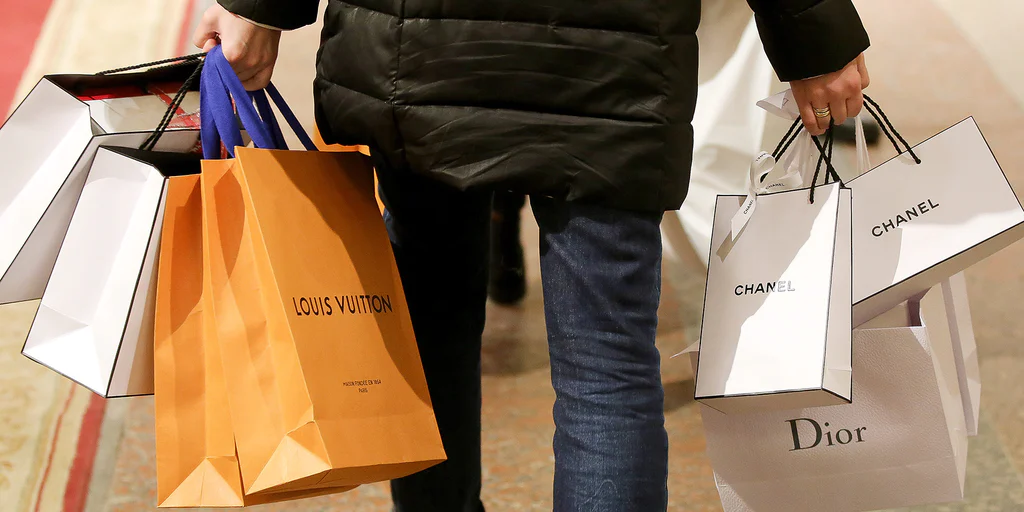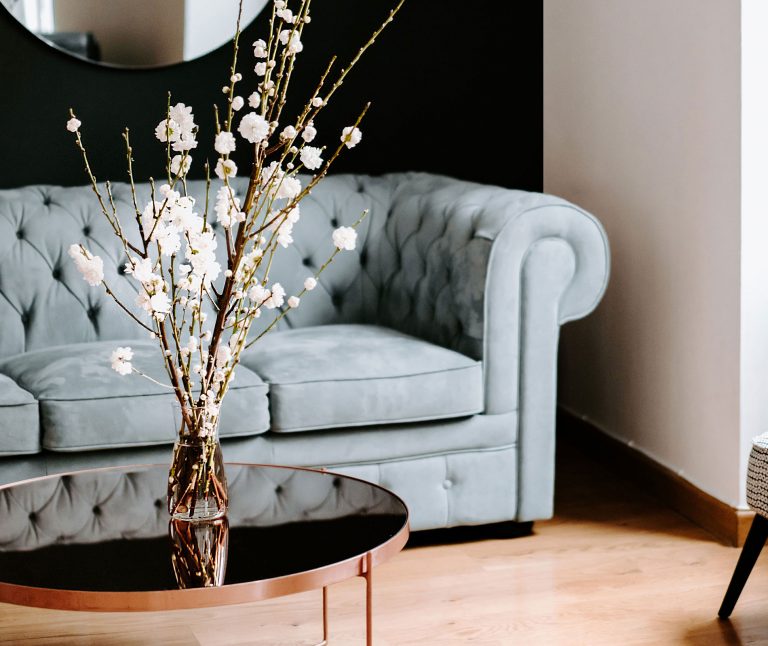Luxury Industry2021:
Market Check—Brand Power, Multiples, Misses
Strong brands. Shaky demand. Stretched hopes.
My dear Friends,
The Luxury Industry has experienced the worst ever negative demand shock due to the COVID-19 pandemic, far more disruptive and longer-lasting compared to the financial crisis of 2008.
With the exception of a few countries, the global economy went into a total shutdown. Never before in history had the global economy been put to such a drastic halt. Closed shops, no international trade, reduced capital flow, a collapse in commodity prices, a stock market crash and most important for the industry no consumers.
Northern Italy where many luxury fashion brands are headquartered and key productions are located, was hit worst in Europe. 16 Million people in Lombardy, with the capital Milan and 14 other provinces were put under strict quarantine. The Luxury Industry´s key supply and production chains were severely disrupted for months to come now with economies restarting the industry is faced with shaky supply chains and a changed consumer.
Time for a Luxury Industry Market Check: what held, what bent, what broke.
The Toll
The luxury market faces many unpredictable challenges. Even before the pandemic, it made little sense to talk about the sector in terms of averages because growth rates and profit margins were so widely spread out. Even within the same segment and price point, luxury brands’ growth varied from 40 per cent to negative percentages and earnings from 50 per cent to single-digit percentages.
A Drastic Drop
The luxury market´s size in 2019 was $ 316.16 billion, Boston Consulting estimated a drop in sales of luxury goods between 25-45% in 2020,. The CAGR (Compound Average Growth Rate) is forecast to be 4,6% between 2021-2027. This however will only happen if the pandemic comes to an end soon and life is returning to pre-pandemic levels fast.
Zoom In
LVMH`s $ 16 Billion offer to buy Tiffany took a nosedive,
Tiffany has been struggling for years, by July 2020 net sales had fallen by 29%
LVMH`s – Louis Vitton, Moet et Hennesy, Christian Dior, Loro Piana, Givenchy – share price fell due to a reported 27% drop in revenue
Kering´s – Gucci, Yves St.Laurent, Sergio Rossi, Boucheron, Alexander McQueen, Stella McCartney – net profit fell by 63.4% in H1 of 2020
Burberry´s sales plunged by 80%
Ralph Lauren cut its workforce by 15%
Swiss Watch exports fell by 22%
Moncler the new darling in Asia’s fashion market had to digest an 80% slump in sales
Tods announced the suspension of dividend payments
Pernod Ricard (spirits) saw a double-digit slump
Hotels in the Luxury segment had a drop in occupancy by 80 %- Hotel sales dropped by 50%, compared to acquisitions in 2019
The Luxury Car Industry faced “the most serious crisis in its history”, 14 Million cars will not be sold due to the crisis
( During the financial crisis 2008, six million cars remained unsold)
Survival of the fittest
A Luxury Industry market check shows the toll—saturated markets, supply strain, fewer investors. The industry has to face a Darwinian survival of the fittest, based on three fundamentals: brand-driven pricing power, capital strength (balance sheet + investor support), and a credible sustainability license to operate.
Over the past decade, European luxury conglomerates, private-equity firms, and, more recently, US fashion groups and Middle Eastern investors eagerly snapped up attractive acquisition targets. As a result of the current crisis, some of these acquirers—particularly those that aren’t luxury companies themselves—could find that they have neither the core competencies nor the patience to nurture these high-potential brands, and thus might be willing to put them back on the market.

Reinventing the Industry
No one could have predicted the severity of the 2020 disruption. The signs, however, were there long before the pandemic hit the world. Only the industry failed to address the change, the world of luxury will now be forced to change beyond recognition as it gets harder for brands to remain relevant.
Millennials will be the most valuable luxury consumer segment and account for 100% of the growth in the luxury segment. The middle-aged high-net-worth shopper has passed her shelf- life, and will only marginally contribute to the industry´s rebounce.
Consumers around the world, especially in Asia and the Arab countries viewed ownership and affiliation with designer brands as a form of social capital, not just something to wear, but a lifestyle choice that marks them as part of a distinct and exclusive community. The change started years ago when oversaturated consumers of the western hemisphere started questioning luxury brands. Since then brands have been struggling to accommodate these values and expectations and focus on the Asian and Arab Markets where almost 90 % of their revenue was generated.
Consumers in emerging economies viewed ownership and affiliation with designer brands as a form of social capital, not just something to wear, but a lifestyle choice that marks them as part of a distinct and exclusive community. The oversaturated consumers in developed economies started questioning luxury brands alraedy a longtime ago. Since then brands have been struggling to accommodate these values and expectations and focused on emerging economies in Asia and the Middle Eastern countries, 90 % of the revenue was generated there.
Now post-pandemic an even more critical consumer is emerging. Faced with substantial sums of capital wiped out. A consumer questioning purpose, with a critical view on cooperate governance, ethics, and strong opinions on sustainability. To them, the industry will have to prove its relevance and should use the chance to explain a changing world their reason for existing.
True luxury is about sophistication which can not be translated into vulgarity
For consumer expectations, in the age of the saturated and more conscious consumer, the industry failed so far to come up with a real solution, so being more consumer-centric would be a good start.
Experiential luxury, improving omnichannel sales, digitalisation, and being more inclusive will be vital cornerstones. The industry was producing new trends at neck-breaking speed to keep the consumer excited which did result in shaky financial planning models and with more money available an oversaturated consumer.
The future will see closely scrutinized value propositions, aesthetics alone will not be driving sales if ethics do not match expectations.
Donations by various companies and their respective CEOs are generous and leave a positive impact on the fight against the pandemic, but those who do not change their dodgy values will be punished. Living and work conditions of the industry´s workers and supply chains will come under severe scrutiny, the reemerging consumer will ask questions with regards to corporate governance and values.
– Zoom In –
Due to the pandemic, the luxury industry took the worst hit since the second world war
Never before in modern history have economies experienced an economic shutdown of such magnitude
The luxury industry nose-dived, the estimated drop in sales is 25-45%
The industry had too many new investors who lack the competence to lead a brand through a crisis with severe consequences to their survival
Brands need to find new avenues of relevance and address issues of their ethics and governance
Customer expectations started to change years ago – the pandemic only accelerated an unstoppable process
Brands can no longer rely on their past prominence but will be judged upon their ability to listen to the consumer
The market turmoil and the disruption will be a chance for investors to find ´rare gems`
Time and again, the luxury industry has proved capable of reinvention
A New Luxury
For brands to be successful in the world of New luxury will be a matter of how they will be able attention to the Zeitgeist. The playbook turns consumer-centric—courting a younger clientele who collect experiences before they collect logos. Ownership still matters, but the memory—how it was discovered, customized, and lived—is the product.
- Empowerment of New Identities and Lifestyles
- Consumer habits are undergoing a rapid change today as the new generation of consumers focuses on expressing their own individuality rather than ownership. The consumption of luxury is becoming less and less about the luxury brands themselves and more about empowering people to become more of who they are.
- Personalised Experiences
- We are moving away from the tangible aspects of personal luxury to the intangibles-the unique and personalised experience that has the potential to better and transform our lives. Today globalisation and mass production mean that more people can afford to own more things than ever before. But the more we can buy, the less it means to us.
Luxury is a byword intended for exclusiveness, research, experimentation, purity and class
- Everyday Essentialism
- Luxury used to be reserved for ‘best.’ Rare and special things, treated with awe and kept carefully aside for special occasions. But a rising tide of affluence means that our access to luxury has become more democratised. The new savvy consumers are becoming more shopping connoisseurs as they look for premium quality to meet and satisfy their own essential needs.
- Catalysts Of Culture Change
- The new consumer uses the choice of brands as a marker and signifier of identities she created for herself, unlike the brand creating a personality. Successful luxury brands will need to advocate for social and cultural values their customers care about.
Revitalising luxury brands means redefining the very essence of luxury to match the needs and expectations consumers have today.
Dr.Martina Olbert, CEO of Meaning Global
Relevance Matters
Luxury brands´ very existence is tied to their cultural and symbolic value, when these brands are at odds with the current Zeitgeist, they can lose their value even if their legacy stays strong. This affects the luxury and premium sector far more than any other category simply because they have a lot more to lose.
First things first. Brands need to understand who they are, their values and beliefs and how they want to express them. It is not anymore about what the brand´s history is but who they are to their customers and who they want their customers to become when they purchase the brand. Being essential to the customer is about discovering new ways to create meaningful value in people’s lives and the role a brand plays in the customers’ life, given the values and beliefs a brand stands for.
A Chance for Rare Gems
The crisis will be another chance for ‘rare gems. Over the past decade, European luxury conglomerates, private-equity firms, and, more recently, US fashion groups and Middle Eastern investors eagerly snapped up attractive acquisition targets. As a result of the current crisis, some of these acquirers—particularly those that aren’t luxury companies themselves—could find that they have neither the core competencies nor the patience to nurture these high-potential brands, and thus might be willing to put them back on the market. Acquisitions that were once forbiddingly expensive could become viable in the post-crisis period. Such developments could result in further industry consolidation or even the formation of new luxury conglomerates.
Time and again, the luxury industry has proved capable of reinvention. There is a lot of confidence about the sector’s long-term potential. Some brands will emerge from the crisis stronger, while others will struggle to preserve the integrity of their business. Much will depend on their ability to respond to the short-term urgencies related to COVID-19 while simultaneously planning and executing for the future.
Before we return to our lifes: Long‑term planning is self‑respect with a spreadsheet.
– yours Harper






